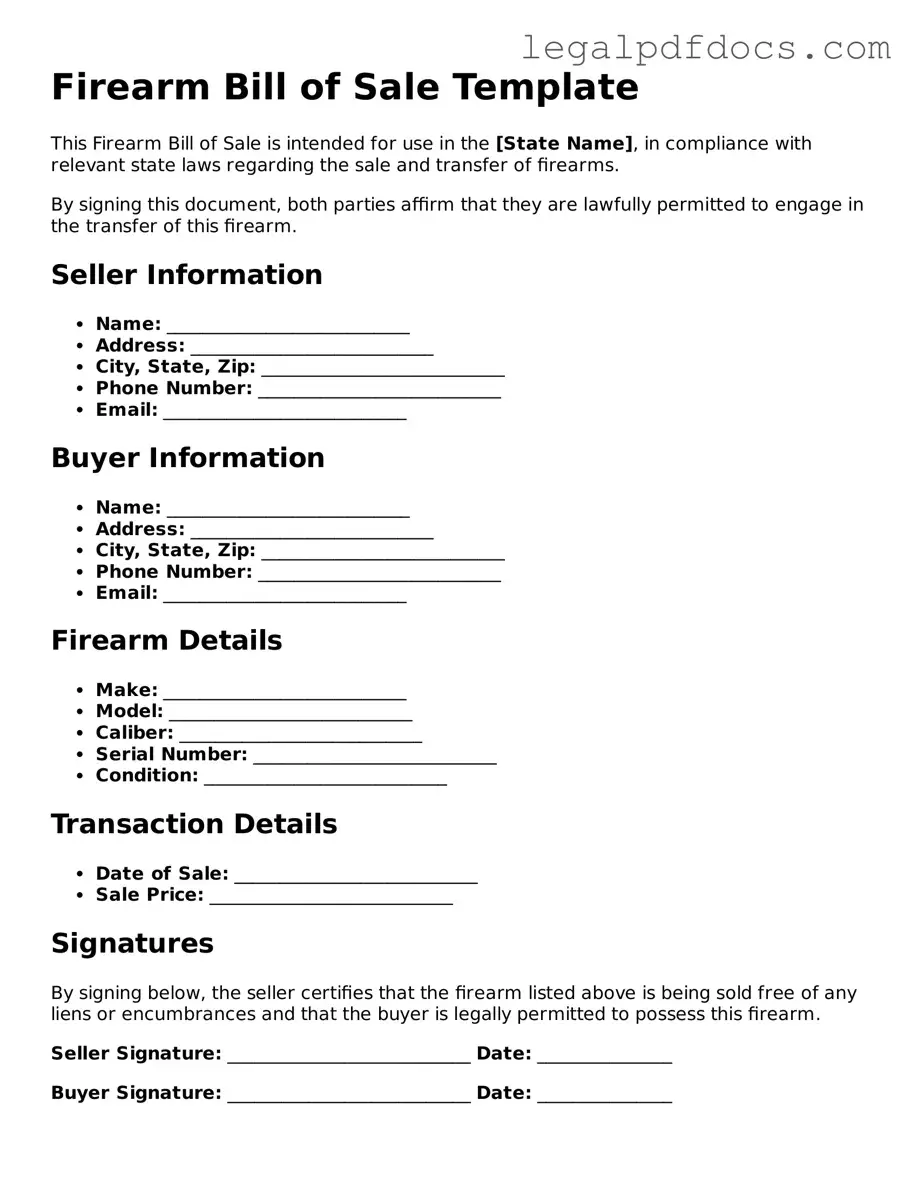Firearm Bill of Sale Template
A Firearm Bill of Sale form is a document used to record the sale or transfer of a firearm between parties. This form serves as proof of ownership and details important information about the buyer, seller, and the firearm itself. Understanding this form is essential for anyone involved in buying or selling firearms legally.
Ready to fill out your Firearm Bill of Sale form? Click the button below to get started!
Open Firearm Bill of Sale Editor Here
